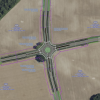Baby turtles draw readers, spark hope
Nearly a dozen baby green sea turtles from a nest laid in Cape Henlopen State Park are expected to make their way into the Gulf Stream in the coming days.
The hatchlings are celebrities: until now, no green sea turtle has ever been known to lay eggs in Delaware. A park ranger who came upon the turtle, near a jetty, at first mistook the mother turtle for a sand castle near the water’s edge.
But the turtle laid her eggs so close to the water biologists decided they would never survive. The nest was carefully moved toward the dune and protected from predators with a wire fence.
Then came a hurricane and a tropical storm which covered the nest in sand so deep the turtles were again threatened. Volunteers again came to their rescue, removing some of the sand.
Weeks went by and temperatures dropped, again threatening the turtles’ chances. So the eggs were dug up and placed in incubators. Finally, after weeks of watchful waiting, the first baby turtles appeared.
The very survival of the green sea turtle, which scientists say swam in the oceans back when dinosaurs still roamed the Earth, seems like a minor miracle; in any case, the story of this unlikely clutch of eggs has drawn thousands of readers.
Humans enjoy stories about babies of many species – kittens and puppies certainly top this list, but even unlikely baby turtles have quite a fan club.
Could this effort to rescue and foster tiny creatures stem from an impulse that runs deeper than a fondness for cuteness? After all, people have been known to rescue critters as ugly as baby birds fallen out of nests.
Could it be that the human impulse to survive extends beyond personal survival, or even survival of the human species, to include survival of other species or possibly even our planet?
Somehow the story of imperiled baby turtles strikes a chord, a resounding chord that offers hope people will find ways to ensure our planet and its wildlife will survive.














































